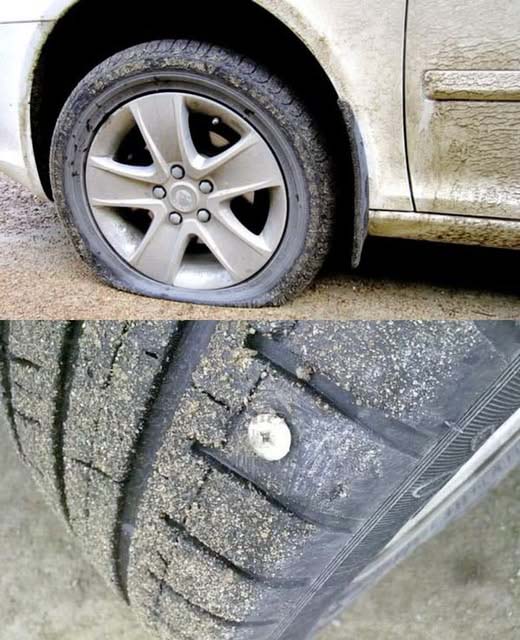ADVERTISEMENT
⚠️ 5. Use a Tire Repair Kit (In Some Cases)
If the puncture is small and the tire has not lost too much air, you can use a tire repair kit as a temporary fix. These kits typically include:
- Rubber plugs to seal the hole
- Sealant to fill small punctures
Follow the instructions on the repair kit carefully, and keep in mind that this is a temporary solution to get you to a repair shop for a proper fix.
🧰 6. Check Your Tires After the Incident
Once the puncture has been dealt with, make sure to check the condition of your tires regularly to prevent future issues. Here are some quick tips:
- Check Tire Pressure: Ensure all tires are inflated to the correct pressure.
- Inspect for Wear and Tear: Check for any cuts, punctures, or signs of excessive wear. If you find any, it’s time to replace the tire.
- Regular Maintenance: Have your tires rotated regularly, and inspect them for damage every few months.
🌟 7. Prevent Future Punctures
While you can’t always prevent a puncture, there are steps you can take to reduce the risk:
- Drive Cautiously: Avoid running over debris or potholes on the highway. Drive carefully, especially in areas with construction or roadwork.
- Keep Tires Maintained: Regularly check tire pressure and replace tires that show signs of damage or excessive wear.
- Install Run-Flat Tires: If you frequently drive long distances on highways, consider run-flat tires that can continue to perform for a limited distance even after a puncture.
🚙 Final Thoughts: Stay Safe, Stay Prepared
Dealing with a puncture on the highway can be an unexpected challenge, but following these steps will ensure you stay safe and handle the situation effectively. The key is to stay calm, move to a safe location, and decide whether you’ll change the tire or call for professional help. By staying prepared and knowing what to do, you can turn a stressful situation into a manageable one.
Need more roadside emergency tips or tire maintenance advice? Don’t hesitate to ask! Stay safe on the road! 🚗💨
